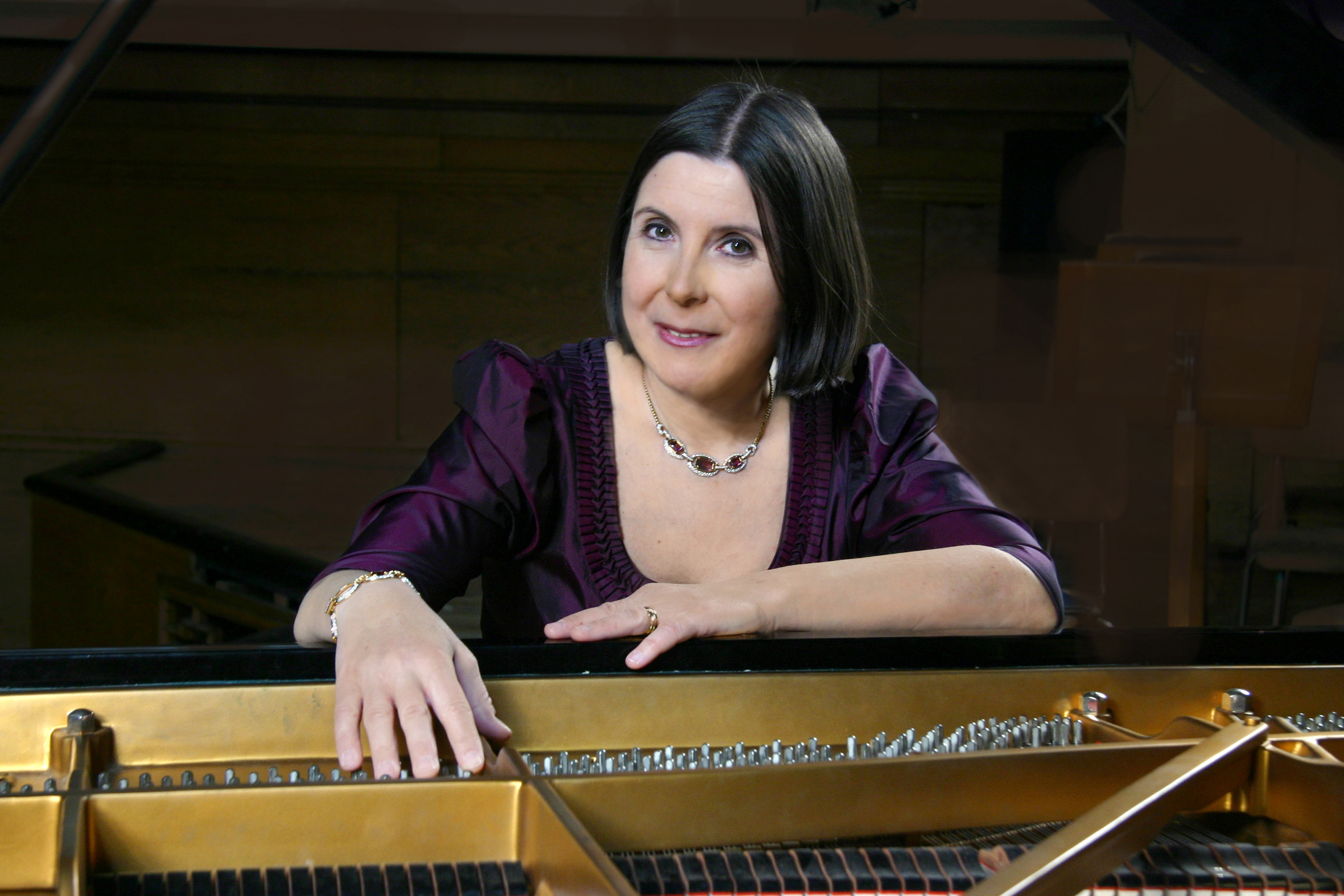Legato Arts presents Maria Prinz, piano
Weill Recital Hall at Carnegie Hall, New York, NY
April 18, 2015
Maria Prinz, a Viennese pianist who has been heard with flutists in New York in recent seasons, returned last weekend to perform a solo recital that was in her words, “all about Mozart and Schubert’s Vienna” in the first half, namely Mozart’s Sonata K.330 in C Major and Schubert’s Vier Impromptus, Op. 90. The second half was devoted to Schumann’s Carnaval – and as the pianist noted, though Schumann was not Viennese, the work’s title and subject “have to do with Vienna.” The program promised a musical feast, and so did the set of program notes written by the pianist herself and revealing considerable passion for this music. Starting off with the declaration, “I love Vienna!” Ms. Prinz expressed just the enthusiasm that one wants to see in program notes, rather than mere dry dates and details.
Ms. Prinz’s playing of Mozart showed that she possesses a sure memory, keen harmonic grasp, and a penchant for assertive, stylish, articulations. It also revealed her boldness in taking tempi just a tad slower than one is accustomed to hearing. Her measured tempi were refreshing, as there is much to explore in each phrase of this great work.
Whether the pianist’s explorations were completely successful is a matter of debate, for while her playing was replete with musically interesting ideas – the sorts that make students run to a practice room after a lesson to rethink things – one didn’t always feel that Ms. Prinz followed through on her own demonstrated impulses. For example, while she excelled at demarcating phrases, especially entrances, there was not the same attention to shape and sustained line. One could almost hear the declamatory “here is the main theme!” before it receded, or the hushed “here is an introspective echo” right before it resurged. Occasionally such reservations seemed a matter of digital control – as top “pinky” notes seemed eclipsed by stronger fingers, trills were sometimes labored or uneven, and crescendi seemed to need more gradation – but it seems fairest to assume that a performer is playing a certain way because he chooses to, and not by default, so I will simply say that I did not always grasp Ms. Prinz’s aesthetic.
In some ways, such a style resembles that of harpsichordists at the piano, quite sensitive to varying articulations and precise in attack, but not always fully utilizing the resources of arm weight to maximize a piano’s capacity for flexible “singing lines.” The result is sometimes more brittle than delicate. While this approach is less than ideal in solo playing, it is common enough in collaborations, and in fact Ms. Prinz is a very active collaborator. She arranged Mozart’s Sonatas for flute and piano with her flutist collaborator Patrick Gallois, and the 2013 recording of it is available on Naxos. Incidentally, her discography is growing to include many items of interest, including works of Schulhoff, d’Indy, and Krenek.
Moving on to Schubert, Ms. Prinz again exhibited an intense energy throughout, never “phoning it in.” Her notes stated that each Impromptu is a “musical jewel” – and this reviewer agrees! The C minor Impromptu was a treasure chest of ideas – again some left unfulfilled but still memorable. The E-flat Impromptu was effective overall, with polished pearling runs over a sure left hand in its outer sections. Only the middle section disappointed, with the repeated triplets becoming overly insistent to overpower more melodic lines. Once again, though, there was always a conscious quality that provokes thought.
The much-loved G-flat Major Impromptu, along with being a gem, is a good litmus test for tonal control issues (though again we do not know what the pianist intended); in any case, the lower accompanying figures tended to overwhelm the outer lines yet again. It is possible that it was a case of deliberately championing the “underdog” underlying harmonies, but in this listener’s experience, the most transporting performances give a sense of those harmonies without their being too pronounced – like a person whose presence is felt without asserting a dominating voice.
The final Impromptu in A-flat closed the set and the first half well, showing admirable lightness in the cascading right hand. While I did not agree musically with the pronounced accent at the foot of each descent, it was an interesting interpretation leading one to look forward to the second half.
Carnaval, in the recital’s second half, had much to admire. Here, by necessity, Ms. Prinz took a much freer approach, physically and musically, and explored a much wider range of dynamics – and the approach suited her. Unafraid to take Schumann’s eccentric fluctuations of tempo to extremes, even with some accompanying risk-taking, Ms. Prinz showed an imaginative grasp of Schumann’s fanciful cast of characters. Her Pierrot movement showed good humor, and her Eusebius had the most persuasive singing lines in the whole recital. Occasionally things got a bit too hectic (particularly the Paganini section), but it was refreshing to see this pianist cast caution to the winds. The close was a wonderful stomping march against the Philistines, a strong finish that left the happy audience clapping in rhythm. Encores were Chopin’s “Black Key” Etude in G-flat, from Op. 10, and Träumerei from Schumann’s Kinderszenen.

